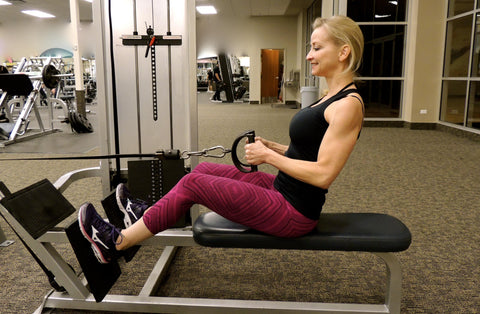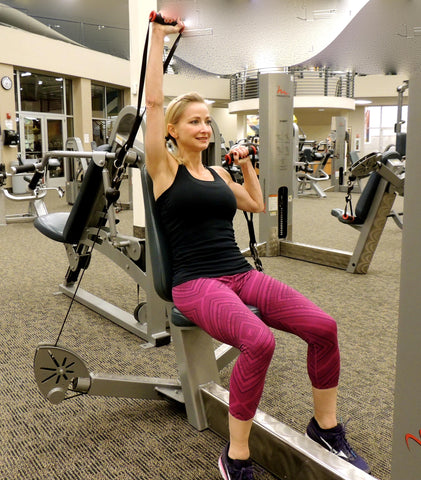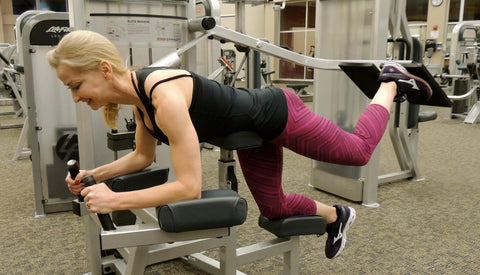Five Tips to Abolish Emotional Eating
by Angie Miller

I’m an emotional eater. Sometimes I use food to escape uncomfortable feelings. When I’m anxious, tired, frustrated, or wired, that tense feeling I get when I’m stressed and overwhelmed, I sometimes turn to food. Like any other unhealthy coping mechanism, it ultimately acts in direct opposition to my end goal and does nothing resolve the situation at hand. But like most other activities that we do in excess, from TV watching, to internet use, sleep, and work, the draw is the temporary escape from our uncomfortable feelings and the need to experience a sense of relief. While I speak, write, and educate about health and fitness and I live my life to stay true to that mission, I am a work in progress. Because I know I’m not alone, I’d like to share some things I’ve learned about emotional eating and learning to control the very thing that sabotages our efforts to feel better.
If stress, sadness, guilt, loneliness, or even anger sometimes drive you to eat when you’re not necessarily hungry, read on. Even if it’s not food, remember that it may be any activity done in excess. In the end it isn’t about the activity itself, but the underlying emotions that drive us to seek temporary escape.
- Tap into your Triggers. Ultimately, before we try to manage something we need to have a better understanding of why we do it, when we do it, and what feelings and emotions are driving the behavior. (It helps me to see overeating as a behavior, because I know that I can change behavior, even if my emotions might need some work). After an “episode” of emotional eating, we need to reflect: Were we anxious, scared, depressed, tired, angry, or overwhelmed? The more aware we are aware of our triggers, the better we’re able to seek solutions.
- Seek Solutions. Once you know your triggers, you can make a plan. If its fatigue that causes you to overeat, then time management may be in order so that sleep becomes a priority. If it’s that wired, tense feeling we get when we’re overwhelmed and anxious, maybe we need to walk away from the project at hand and take a five minute break or a short walk to clear our head and gather our thoughts. When we’re calm and centered we can come back. The key is to put a gap between the urge to eat and the act of eating itself. Whatever your triggers, write them down. Then write out solutions. You know your triggers better than anyone, and we’re all better at solving our own problems than we realize.
- Exercise. It goes without saying what exercise does wonders for our mind and body. It gives us mental clarity, boosts our confidence, and helps us rebound after a setback. When stress is at its peak and were overwhelmed by life's demands, exercise may be our best tool to stabilize our emotions and prevent us from overeating.
- 4. Get help if you need it. Admitting that we need help isn’t about relinquishing power, it’s about taking our power back. It’s using all of the tools we have to look and feel and our best. Professional help can give us outside perspective, a deeper understanding of our triggers, and healthier coping mechanisms that we can apply to all areas of our life.
- Practice Self-Acceptance. If the need to “have it all together” was a requirement to be successful in life, I think we’d all fall short. Self-acceptance is the ability to accept that we have limitations. These are our personal challenges and they keep us humble. They remind us that we are all a work in progress. When we have a set-back and food becomes our crutch, it doesn’t mean anything other than the fact that we're human. The best part is, the next time our emotions are running high we have the opportunity to seek healthier alternatives.
Best to You in Health~
- Angie
Angie Miller is the star and creator of the Bedroom Body™ Workout and other top selling exercise DVD’s. Passionate about fitness and education, Angie teaches at Northern Illinois University and is a Certification Specialist for the Aerobic and Fitness Association of America (AFAA). She is a freelance writer, group fitness instructor, personal trainer, and proud mom. Learn more about Angie at: http://www.angiemillerfitness.com











 Sometimes in life things really are simpler than they seem. Exercise and weight loss might be one of those things. You don’t need the hottest diet on the market or even a degree in exercise science to figure it all out. If you want to establish a new exercise routine and lose those last 10 pounds, consider these simple steps…
Sometimes in life things really are simpler than they seem. Exercise and weight loss might be one of those things. You don’t need the hottest diet on the market or even a degree in exercise science to figure it all out. If you want to establish a new exercise routine and lose those last 10 pounds, consider these simple steps… For those who are wary of weights and addicted to cardio, I posted a blog
For those who are wary of weights and addicted to cardio, I posted a blog 




